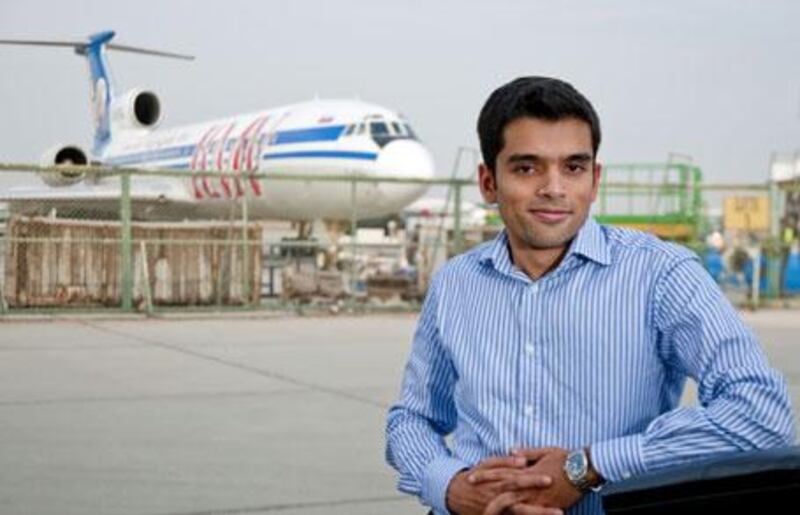A Twitter-enabled mobile phone in hand and a cargo plane crashing in front of him, Albert Dias suddenly had a taste of what it was like to be a newsman. An employee with a travel company close to Sharjah International Airport, Mr Dias and his colleagues are avid skywatchers.
Although he had seen a few planes wobble during take-off, they always righted themselves and flew on without incident. October 21 was different. After a late lunch, he and his workmates thought nothing of the Sudanese cargo aircraft lifting off in the distance. Then, when it had reached a height of about three storeys, "there was this piece that seemed to fall off", he said. "It was a dark grey panel, like aluminium. Some reports quoted me saying it looked to be about the size of a motorcycle."
For a few seconds, he watched as the plane continued its ascent, then bank sharply to the right. The tail began to drop. The plane moved out of his sight, obstructed by a large building. "Five to 10 seconds later, there was a thud. When you watch movies, you expect an almighty explosion, but it was nothing like that," he said. "There were plumes of smoke after that." Flight SD2241 to Khartoum had crashed into the desert behind the Sharjah Golf and Shooting Club, killing all six on board. At 3.32pm, one minute after the crash, Mr Dias took his Nokia phone and uploaded the following note to the micro-blogging site, Twitter: "Aircraft crashes on take-off from Sharjah. Seeing plumes of smoke as we speak. Part fell off on take-off."
Those in the news business would say Mr Dias broke the story. It would be a coup, except he is not a journalist. In rushing to get the news out, however, he did react like one. "We feared the worst, and thought it hit the Sharjah Golf and Shooting Club," he said. "So we called them and they didn't even know it had happened." Mr Dias and his colleagues went back to the cafeteria. "There was an adrenalin rush for an hour," he said. "I'm an infrequent Twitterer, but I felt that I had to get the news out."
He sat glued to his telephone, typing in updates as his friends looked on. "I told my friend that I understood what it was like to be Dan Rather for two hours. It was really exciting." He tweeted the colour of the plane's livery, the sirens, the absence of the smell of fuel and the direction of the plane as it plummeted toward the ground. At 4.41pm, he updated: "Sorry, battery died tweeting from the food court. Still no confirmation on the airline, but it certainly didn't look like Kish Air livery."
About an hour after the crash, the first major media outlets were reporting the event. Mr Dias's actions in those first crucial moments alerted reporters to the story and spared them from having to rely on government officials for initial reports. However, that convenience came at a price: the newspapers and their websites were no longer the go-to sources for breaking news. That honour belonged to Twitter.
No media organisation can match the site's six-million-strong army, able to morph into on-the-ground reporters at the first sign of news, anywhere in the world. After trying on a newsman's hat, Albert Dias went home. It was midnight before he realised what he had done: "Once the adrenalin wore off, it was awful. What hadn't struck me was the thought that I had experienced this loss of life." People had died, he said. "The realisation of that had not sunk in earlier."
@Email:jgerson@thenational.ae






